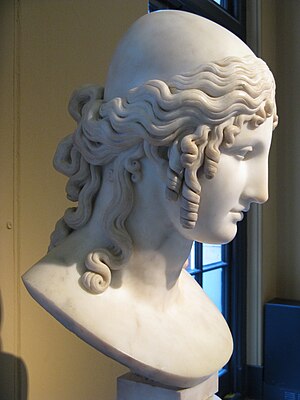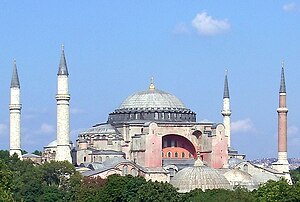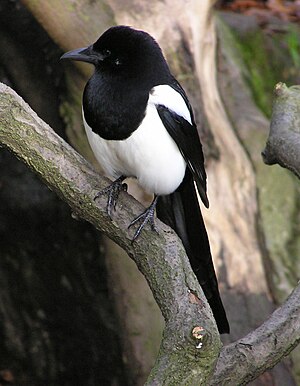 |
| via LittonsDirectToYou.com |
Happy Dance! I have
100 followers (See the little box on the left sidebar? That's you folks!) and (starting from when I became a
real blogger in July) today is my
100th post! Schools always celebrate the 100th day, right? So everybody grab a some chai or a latte and lets have some virtual red velvet cake!
A bit of info about our wonderful guest,
Tracy Marchini:
Her resume includes Curtis Brown, Taconic Press, BookPage... She's mentored at Rutgers One-on-One Plus Children's Literature Conference. She's critiqued query letters and/or manuscripts for the Society of Children’s Book Writers and Illustrators (SCBWI) Poughkeepsie Conference since 2007. The list goes on! Tracy is currently a freelance writer and professional manuscript critiquer. For more about her, because she says it better, click the link above for her "about me" page.
Everybody, this is Tracy...
Please do not stalk her on the subway for insight. Send her an email!
(Little tip folks: she often has a query critique contest on Mondays.)
First, I would like to thank Tracy for always taking the time to answer all of my (sometimes) overly analytical questions. The
Dunning-Kruger syndrome targets writers especially hard, as we all know :)
ME: Connecting to characters kids already know is tempting, except references to popular culture can be expensive and sometimes date a book. However, does (very limited) name dropping distract too much from the story?
TRACY: I think the biggest problem with contemporary references is that, like you said, it is very easy to date your book before it's even been published. There are some references that will always be classic -- generations of teens have loved the Beatles, for example. But if you were to mention Bieber's newest album (
My World 2.0 - and yes, I had to look it up!) as if the character had just bought it on iTunes, the album could be three years old by the time your book hits shelves, and the next 16-year-old teen artist will probably be on the rise. It will pull readers out of your contemporary story, because they will remember immediately that they acutally did buy that album three years ago.
That's not to say that pop culture references are always detrimental. They can be very useful in giving the reader a sense of character. If you tell us that someone has every film that Alfred Hitchcock has ever made, it gives us quite a different sense than someone who has watched Beauty and the Beast over 100 times.
The trick is to pick your references so that they are timeless, and to do it only when it will truly enhance the reader's understanding of your character. Otherwise, feel free to make up band names and cheesey sounding romance movie titles, and whatever else you need that can help flesh out your main character's world!
ME: Adjectives are an expensive accessory. The cost is pacing and word count. On the other hand, stripping a manuscript down can leave a generic mess behind. How do you decide where to put the descriptors?
TRACY: If you're reading the mansucript outloud and you can feel that you're stumbling over words, then it's time to look at how you can clean up your prose. Since every manuscript is different, it's hard to give a set of rules about when and where to use description, but I can give some general don'ts.
- Don't use adjectives or adverbs with every dialogue tag (i.e. "she said, sadly," "he said, laughing," "she said, weeping," etc.).
- Don't open each chapter with a paragraph of description. If the setting is important, we certainly need details, but I find that many newer authors open each chapter with a large block of description about the setting or whichever character we're about to meet. What this tends to do is slow down the pacing of the book, and also can make the reader feel like they're reading multiple first chapters.
- Don't stop your action in the middle of the scene to tell us extraneous setting or description. If your main character is falling down a cliff, we're not really concerned about the minute details of the flora and fauna she's falling past!
ME: What about the use of big words? We’re all tempted to go purple with the prose… maybe if we add just a few interesting words…like say… intarsia or zephyr? (Such pretty words. Sigh.) Good? Bad? Do you think they hurt pacing even if we put enough context?
TRACY: Again it's hard to say, but the read-aloud rule is an excellent litmus test for this as well. I think that writers sometimes assume that you can't use larger words in children's literature because the child/teen won't know what it means. I think this can be a large underestimation of the audience and also can sanitize your writing. However, if you find that you're defining words in your prose, or you're using two big words when one smaller one would work better, then you might want to reconsider your word choice.
ME: Male protagonists seem to be on the rise in YA. Are there a few cardinal rules you can give us (ladies) about crafting a believable male voice?
TRACY: The first thing I would say is to search out books with YA male protagonists and read, read, read! I would also remember the following:
- Males and females have different speech patterns in general. Men use fewer qualifiers and tend to make statements, while women will try to ask questions to try and keep the conversation flowing. (I talk more about this in a post on my blog -
Differences in Male and Female Speech )
- Boys don't talk about girls the way girls talk about boys. Though they use fewer words, they are much more graphic when they talk to their friends. They also tend to be more visual. So if a boy decides to talk about a girl with his friends, he's going to describe what she looks like first, and he probably will keep his deeper emotions to himself. A girl, however, will tell her friends everything and use much more flowery language.
- Men tend to be more action-oriented. They want to fix things, and they like to find the logic in things. Think about the protagonists of John Green's novels (and I'll try to do this without too many spoilers, because everybody should go out and read these books!) In
Looking for Alaska, Miles wants to know what happened to Alaska. His mission is based on both his affection for Alaska, his guilt over his part in helping her leave campus, and also a desire for logic. He needs to understand why she did what she did. In
An Abundance of Katherines, Colin is looking for a mathematical formula to predict the path of a relationship after being dumped by his 19th Katherine. (How's that for seeking logic?)
But, not all men are the same, so these are perhaps more like baselines than cardinal rules.
ME: Frontloading with backstory is bad, but we need solid facts in the first paragraph on the first page to indicate where the story is going. Any magical hints on how to balance that?
TRACY: As far as a character's personal history on the first page, only give us the information we need to know to understand what is happening in that first scene and at that moment. Pull us in with the action, and then let the backstory come out naturally as it's needed. You might find that you know your character's whole life story, down to their first word -- but unless it's relevent, leave it out.
In order to tell us the direction of the manuscript in the first couple paragraphs, it might be helpful for you to finish the manuscript first, and then go back and read your first chapter. Many times, your manuscript has taken a life of its own, and perhaps your first chapter no longer accomplishes everything it should. If you find this is so, rewrite. It'll be easier to put all the essentials into the first paragraph and chapter once you know exactly where your character is going to land by the end of the book.
ME: Happy endings just don’t seem to fit with a lot of edgy YA stories. Nevertheless, many authors feel the need to tie it all up with a nice bow. (I’m thinking Mockingjay: stone me later). Do you think they’re capitulating to a market trend?
TRACY: I'm going to say that I hope not! No matter how edgy your YA story is, the character does have to show an emotional growth by the end, but they don't have to have all their ducks in a row, so to speak. Marketing trends are interesting, because sometimes two or three houses will come out with very similiar sounding books and it'll feel like there's been a group decision to make something the next 'it' thing. But in reality, the books were bought at least a year and a half to two years before, the publishing houses are not trading notes about what are on their upcoming lists, and each house is independently buying books to try to vary what they offer with each list and to perhaps fill the gaps in what they're missing. (However, imprints within a house talk, of course, and Random House and Knopf are unlikely to both buy different picture books about the same subject.)
ME: Mythology is big right now. (Actually, I can’t remember when it wasn’t.) Yet allusion is a bad query word. I thought the whole point of allusion is that some people get it, while others don’t... like finding the cheat codes for Assassin’s Creed. (Can’t wait for the new one!) My question: Is too much subtle allusion a silent manuscript killer?
TRACY: I don't know that I'd agree to allusion is a bad query word, I think it's probably the words that follow! But I would say that allusion is really only truly effective when your audience does know a bit about what you're alluding to. For example, most teenagers have either had to read or are familiar with Shakespeare's Romeo & Juliet, so if your main character describes herself and her crush as two "star-crossed lovers" the audience is going to immediately picture the terrible end of Romeo and Juliet and (hopefully) assume that the relationship between your protagonist and her crush is also going to end pretty poorly.
If you find that you're explaining too much of the mythology or other material that you're alluding to, it might be time to re-evaluate why you want to use that myth or allusion in particular. I would also keep in mind that a lot of readers will gloss over allusions they don't understand instead of going to look them up, so in that case they've become words without meaning/value.
ME: Since I’m itching to know, what was the most useful thing you learned from the
La Muse workshop?
TRACY: La Muse was a retreat, so we didn't meet for workshops. I think one of the best things about the retreat was being in a maison with five other people that were serious about their writing, but who were also looking forward to exploring the French countryside. I'm still in touch with some of my fellow Musers, and I was able to write a first draft while I was there. It was an amazingly beautiful village, and there were definitely days I felt like I was living in a postcard. I did learn that I liked duck though, so that might be useful the next time I'm in a restaurant!
ME: What’s your favorite book of all time?
TRACY: This changes depending on the last book I read, and what mood I'm in! Recently I've been feeling an itch to re-read all of
Beverly Cleary's Ramona books, but it could be that it's because there's been a push and repackaging for the movie. (Darn you marketing!!)
ME: Bittersweet or milk chocolate?
TRACY: Milk chocolate and/or dark chocolate, but I will pretty much eat any chocolate that doesn't have anything crunchy in it. (Also, I love peanut butter and I love chocolate, but I don't enjoy them together. It's kind of weird.)
ME: Finally, does a degree in Rhetoric make you a more tactful editor? Or are you simply nice?
TRACY: Maybe I'm nice because I'm eating all that chocolate! :) I do think my degree definitely trained me to think critically about a piece of work, and I always strive to be honest and fair in my critiques and to do it in a constructive way. My main goal is always to help somebody make the piece the best it can be, and to do in an atmosphere where they feel like they can ask me questions if they don't quite understand something in my editorial letter. I can't guarantee that everything that I critique will get published, but I do want to make sure that everybody that gets a critique comes away with knowledge that they can use to become a stronger writer.
Thank you for all your fabulous answers, Tracy!
PS from ME: A manuscript critique from Tracy feels like a detailed revise and resubmit request, except you haven't wasted any query goodwill of the agents on your list. She's probably saved me a great deal of heartache. (Although, I fully expect to do plenty of writhing when I query soon.)












































